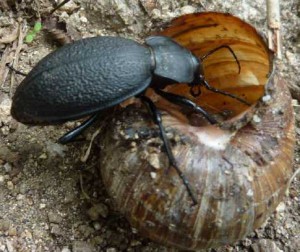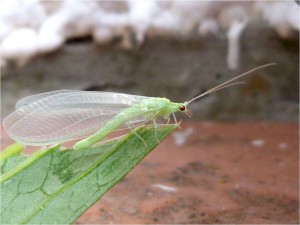
The common themes of busyness and learning have pervaded the last few weeks of my placement. I have had the opportunity to visit a number of community groups, giving me a great insight into the world of community led environmental work. I spent some time checking out a number of places that were interested in doing bugwalks and bug related activities over the summer and discussed with them how I might be able to contribute to their work. On top of this I have started leading sessions (both indoors and out) to teach people about bugs and their importance. Two main themes of what I have been teaching people are pollination and gardening for bugs.
Gardening with bugs in mind is crucial if you want to create a biodiverse garden, or even if you just want to create a space which is pesticide-free where snails don’t eat all your leafy greens (easier said than done). One of the major issues facing gardening for bugs undoubtedly relates to our perceptions if what is tidy and neat in the garden. The social pressure to keep things neat and tidy is deep-rooted. Gardening styles have changed over the past few centuries and ‘tidiness’ has often been a theme, from Edwardian and Victorian fashion, to the work of Capability Brown and the introduction of the lawn mower in the 1827 by Edwin Beard Budding, to name but a few.
For whatever reasons, we now live in a time where people would rather have a small patch of short clipped grass containing perhaps a few predominant plant species. A desert for most animal life (incidently, Dandelions are exceptionally useful to pollinators so allow them to flower). Gardening to promote bug diversity, and hence boost diversity of the many species that exploit bugs, requires that we reassess our love of this pristene garden style, at least a little.
There are many things we can do to increase bug biodiversity in the garden, either actively or passively, here are just a few:
- Not use pesticides as these are often highly toxic to many pollinator species and may kill numerous non-target invertebrates.
- Providing an abundance of flowers is probably the best thing you can do for minibeasts.
- Allow an area to grow wild of its own accord. Just leaving a patch can be of huge benefit to many invertebrates and pollinators. Sowing a wildflower patch can also be of use, but often it is a good idea to just leave a patch of grass to grow and observe what species are already there. The ‘seed bank’ of an area can often be rich in different wildflower species so sowing seeds brought it from other places is often not even necessary. Instead reduce the cutting of an area to fit in with the life cycle of wildflower species (http://www.scotiaseeds.co.uk/howtoestablish.php)
- Create bee homes. Constructing little bee houses can be great fun and boost the habitat space for the myriad of some 250+ solitary species that occur across the UK. Solitary bees are excellent pollinators of native flowers and many horticultural varieties. You can provide habitats for bumblebees as well, although I have read from a reliable source that buying the bumblebee houses you find in garden centres may be a waste of money as they aren’t very successful.
- Use log piles: Creating small logs piles at the end of each flower/vegetable bed provides habitat for the wide range of Carabid and Ground beetles that can hunt and eat snails and slugs that munch on our leafy greens. Keep your eyes peeled for the Snail Eating Beetle (Cychrus caraboides). Most ground beetles are voracious predators and as the name suggests, spend their time on the ground and few can fly. The fusion of their wing cases (elytra) acts as protecting armour. Both larvae and adults are carnivorous and often specialise in eating slugs and snails, as well as eating a range of carrion. Depending on the ground beetle species, they will also attack aphids and other pest insects. By encouraging them into your garden you can start on the road to a natural method of pest control. Many ground beetles are nocturnal and need some form of shade during the day. Provide them with shelter such as a log pile, leaf litter or just some large stones. Ground beetles can be found throughout the year, although they hibernate during the coldest winter months, sometimes in garden sheds.
- Keep some nettles in open sunny spots: Peacock and Small Tortoiseshell Butterfly caterpillars require nettles, but leaving them in a shady spot will do no good, you have to give them a little space in the sun. Coax White Butterfly caterpillars away from your brassicas by providing some out of the way Nasturtiums (a practice that goes back to the gardening of Thomas Muffet in the 16th century who interspersed his Brassicas with Vetches).
- Create some bare patches of earth or concrete/stone to help the cold-blooded invertebrates get warm, provide hunting ground and possible habitat spaces. Bare patches are an important part of any garden and should not be seen as unsightly or unwanted, but rather an important aspect of a small ecosystem.
- Lacewings are the best known insects from the Neuroptera order, ‘nerve-wings’, elated to their intricate net like wings. Their appetite for aphids is prodigious, each adult lays 300 eggs and each larvae needs 1,000-10,000 aphids during its development. So one pair of lacewings has the potential to eat 3 million aphids from a garden. Indeed, you can get ‘lacewing chambers’ to hang in the garden to reward them for their efforts.
There are many more things to say on this topic and the list is by no means exhaustive. No doubt Buglife will have much to say on the matter when we attend ‘Gardening Scotland’ at the end of June. Hasta luego.



